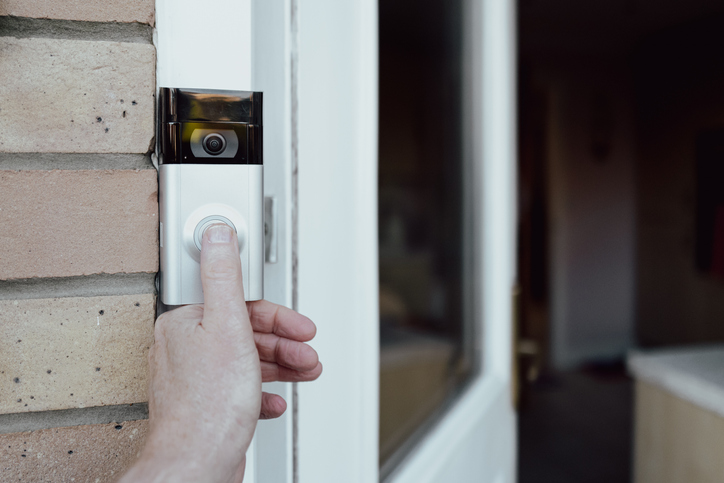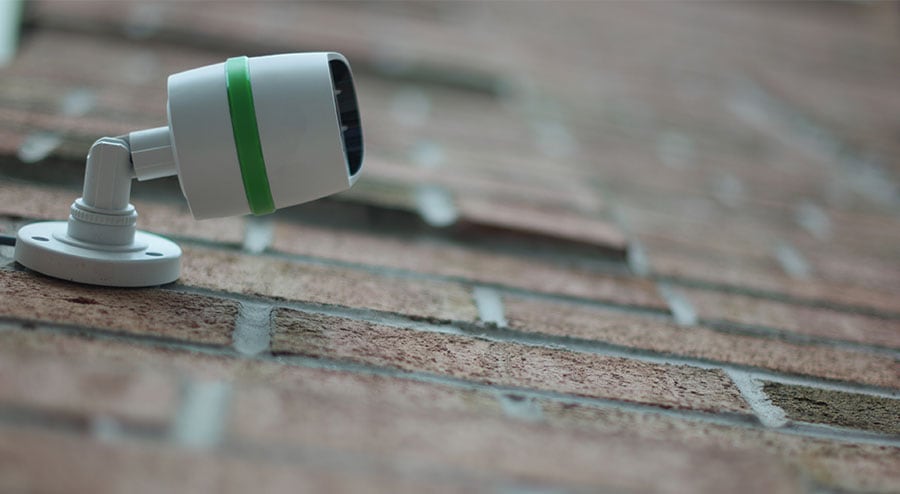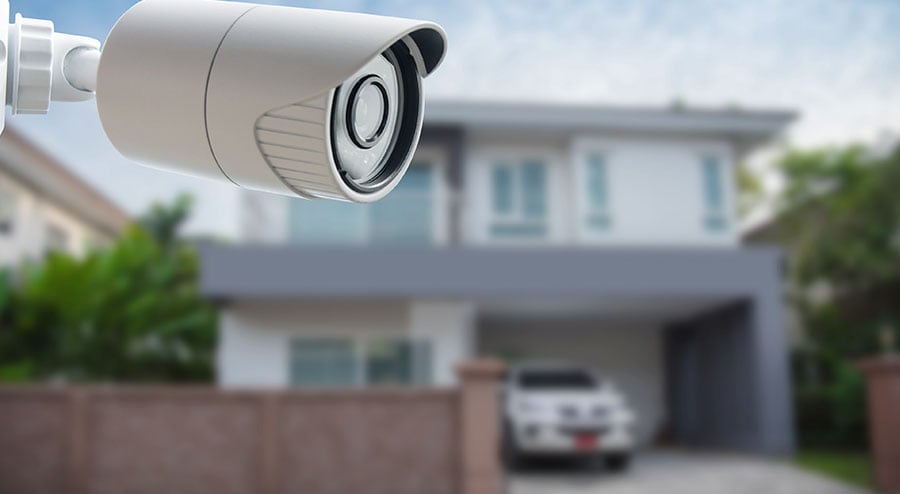Step into the future of home security with the revolutionary integration of security systems and home automation. In this era of smart homes, the convergence of cutting-edge technologies offers homeowners a level of protection and control like never before. Through the seamless combination of smart cameras, locks, and sensors with home automation features, homeowners can enjoy a comprehensive and interconnected security ecosystem. In this article, we will explore how this integration brings unparalleled convenience, customization, and real-time monitoring to create a safe and intelligent living environment.

The Integration Of Home Security And Automation
Smart homes are residential properties equipped with various internet-connected devices and technologies that allow homeowners to automate and control various functions remotely. These devices are often referred to as the Internet of Things (IoT) devices. Examples of smart devices in a smart home include smart thermostats, smart lighting, smart cameras, smart locks, and smart appliances.
As the number of IoT devices in homes increases, so does the potential risk of cybersecurity threats. IoT devices, if not properly secured, can be vulnerable to hacking and unauthorized access. Cybercriminals may exploit security loopholes in these devices to gain access to the home network, compromising sensitive information or even gaining physical control over the smart home.
- The Integration Of Home Security And Automation
- Benefits Of Integrating Security Features Into Home Automation
- Privacy And Data Security Concerns
- The Role Of Smart Devices In Home Security
- Creating A Comprehensive Security Ecosystem
- Customization And Flexibility Of Smart Security Setups
- Integration Of Home Security And Home Automation
- Enhancing Smart Home Security With Voice Assistants
- Automating Security Measures Through Geofencing
- Remote Monitoring And Control
- Backup Options For Continuous Security Functionality During Outages
- Cost Considerations And Insurance Benefits
- Conclusion
According to a study conducted by Statista in 2020, the global market for smart home security devices is projected to reach a value of over $135 billion by 2025. This significant growth highlights the increasing popularity and adoption of smart home security systems, showcasing the rising demand for integrated security solutions that leverage the power of home automation to enhance safety and convenience for homeowners.
Benefits Of Integrating Security Features Into Home Automation
Integrating security features into home automation brings a host of benefits for homeowners. By seamlessly incorporating smart cameras, motion sensors, and smart locks into the system, a comprehensive security ecosystem is created. Remote monitoring and control allow homeowners to receive real-time alerts and updates on security events, enhancing peace of mind even when they are away from home.
The integration also offers convenience and energy efficiency. Homeowners can program routines, such as automatic arming and disarming of the security system, making it hassle-free to manage security measures. Smart devices can optimize energy usage by triggering lights only when needed, contributing to environmental sustainability.
While the benefits are significant, privacy and data security concerns must be addressed. Implementing strong passwords, regularly updating firmware, and ensuring secure Wi-Fi networks are essential. Moreover, being mindful of privacy settings and choosing reputable vendors with a track record of secure products help mitigate potential risks. With proper precautions, the integration of security with home automation transforms smart homes into efficient, secure, and personalized environments.
Privacy And Data Security Concerns
Addressing privacy and data security concerns is crucial when integrating security features with home automation. Protecting sensitive data, such as video footage and user habits, requires implementing strong passwords and regular firmware updates. Two-factor authentication adds an extra layer of protection while securing the home Wi-Fi network with robust encryption to prevent unauthorized access.
Controlling data sharing through privacy settings on smart devices is essential for minimizing risks, and choosing reputable vendors ensures reliable and secure technologies. By taking these proactive privacy measures, homeowners can confidently embrace the benefits of a connected home while safeguarding their personal data and maintaining a secure smart home environment.
The Role Of Smart Devices In Home Security
Smart home security devices are an integral part of a modern smart home setup, designed to enhance the safety and security of homeowners. These devices encompass a range of technologies, including smart cameras, smart locks, and various types of sensors.
Smart cameras are equipped with advanced features such as high-definition video recording, motion detection, and night vision capabilities. They can be placed indoors or outdoors to monitor specific areas around the house. With real-time video streaming and remote access through mobile apps, homeowners can keep an eye on their property from anywhere.
Smart locks provide an alternative to traditional key-based locks by allowing homeowners to control access to their homes digitally. They can be remotely locked and unlocked through mobile apps, providing convenience and eliminating the need for physical keys. Some smart locks also offer features like temporary access codes for guests or delivery personnel.
Smart home security systems include a variety of sensors that detect different types of events. Motion sensors can identify movement in specific areas and trigger alerts or actions, such as turning on lights or activating alarms. Door and window sensors can detect unauthorized entry attempts, while smoke and carbon monoxide detectors provide early warnings in case of potential hazards.
Creating A Comprehensive Security Ecosystem
The true power of smart home security lies in the seamless integration of these devices into a comprehensive security ecosystem. When integrated, these devices work together, sharing information and triggering actions based on predefined rules and scenarios. This interconnectedness enhances the overall security of the home and enables a proactive response to potential threats.
For example, when a smart camera detects motion outside the front door, it can send an alert to the homeowner’s smartphone. Simultaneously, a motion sensor on the porch can trigger the smart lighting to turn on, illuminating the area and potentially deterring intruders. If the motion continues, the smart lock can activate an auto-lock feature for an extra layer of security.
Some smart security systems support geofencing technology, allowing homeowners to set virtual boundaries around their property. When their smartphones cross these boundaries, the security system can automatically arm or disarm, enhancing convenience while maintaining security.
Customization And Flexibility Of Smart Security Setups
One of the significant advantages of smart security setups is their customization and flexibility. Homeowners have the freedom to tailor the system to their specific security needs and preferences.
They can define personalized rules and automation scenarios based on their daily routines and lifestyle. For instance, a homeowner can program the security system to disarm automatically when they arrive home, allowing seamless entry without needing to manually deactivate the system.
Smart security setups often allow integration with other smart home devices, such as smart lighting, thermostats, and voice assistants. This integration enables comprehensive automation, where multiple devices can respond to specific events and triggers. For example, the security system can work in conjunction with smart lighting to simulate occupancy while the homeowner is away, creating the illusion that someone is at home to deter potential burglars.
As homeowners’ security needs evolve, they can easily scale and expand their smart security system by adding more devices or adjusting automation rules. This adaptability makes smart security setups an excellent long-term investment that can grow with the homeowners’ changing requirements.
Integration Of Home Security And Home Automation
Seamless integration of security devices with other home automation features is a key aspect of creating a cohesive and interconnected smart home ecosystem. In a well-integrated system, security devices like smart cameras, smart locks, and sensors can work harmoniously with other smart devices such as lighting, thermostats, and entertainment systems.
For instance, when a smart camera detects motion outside the house, it can trigger the smart lighting system to turn on, illuminating the area and potentially deterring intruders. At the same time, the homeowner can receive a real-time alert on their smartphone and view the camera feed, regardless of their location. This seamless integration empowers homeowners with complete control over their security measures, even when they are away from home.
The integration of security devices with smart doorbells allows homeowners to see and communicate with visitors remotely, providing an additional layer of security and convenience. When someone rings the smart doorbell, the homeowner can view the live video feed and communicate through the built-in microphone and speaker via their mobile app.
Enhancing Smart Home Security With Voice Assistants
Voice assistants, such as Amazon Alexa and Google Assistant, are increasingly becoming an essential part of smart home security. By incorporating voice control into the security setup, homeowners can conveniently manage various security devices using simple voice commands.
For example, a homeowner can use voice commands to lock the doors, arm the security system, or check the status of the cameras. This hands-free approach enhances accessibility and allows for quick response times in case of security events.
Voice assistants can be integrated with other smart devices to enhance overall security. For instance, homeowners can create custom voice commands that simultaneously activate security features and adjust other automation settings. Saying a specific phrase like “Goodnight” can lock all doors, set the security system to “armed,” and adjust the thermostat to the desired nighttime temperature.
Automating Security Measures Through Geofencing
Geofencing is a powerful feature that automates security measures based on the physical location of the homeowner’s smartphone. By setting virtual boundaries around the property, homeowners can trigger specific actions as they enter or leave the geofenced area.
When the homeowner’s smartphone crosses the geofence boundary, the security system can automatically arm or disarm itself. For instance, when leaving the geofenced area, the system can activate “away” mode, arming all security devices. Conversely, upon returning home, the system can disarm and deactivate the security measures, ensuring a smooth and convenient entry.
Geofencing can also be used to trigger other automation settings that enhance security. For example, when the homeowner leaves the geofenced area, the system can automatically turn off all unnecessary lights and appliances, conserving energy and creating the illusion of an occupied home to deter potential intruders.
Geofencing can be integrated with smart door locks, allowing homeowners to automatically unlock the door when they approach the house, eliminating the need for fumbling with keys.
Remote Monitoring And Control
Remote monitoring and control of smart home security systems offer homeowners the ability to manage and oversee their security measures from anywhere, at any time, using dedicated mobile applications. These mobile apps provide a user-friendly interface that allows homeowners to access and control their security devices with ease.
Using the mobile app, homeowners can view live video feeds from smart cameras, receive real-time alerts and notifications on security events, and remotely control smart locks, sensors, and other security devices. This level of accessibility ensures that homeowners stay connected to their home’s security even when they are away on vacation, at work, or simply running errands.
Mobile apps often offer features such as arming and disarming the security system remotely, adjusting automation settings, and reviewing past security footage. The convenience of managing security measures through a smartphone empowers homeowners to take immediate action in response to potential security threats, promoting peace of mind and a heightened sense of control.
Advantages Of Remote Monitoring
Remote monitoring provides several significant advantages that contribute to the overall effectiveness and efficiency of smart home security.
Homeowners can receive real-time alerts and notifications on their smartphones when security events occur. Whether it’s a motion detection alert or a triggered sensor, the instant notification allows quick responses, even from a remote location.
In the event of a security breach, homeowners can act promptly by accessing live video feeds to assess the situation. If necessary, they can contact law enforcement or take appropriate actions to address the situation, minimizing potential damage or loss.
Remote monitoring offers homeowners peace of mind, knowing they can always keep an eye on their property and loved ones, regardless of their physical location. This constant vigilance helps alleviate anxieties related to home security.
Most mobile apps are designed to be intuitive and easy to use, allowing homeowners to navigate and control their security devices effortlessly. The user-friendly interface contributes to a positive user experience and encourages regular usage of the app.
Backup Options For Continuous Security Functionality During Outages
A crucial aspect of ensuring the reliability and effectiveness of smart home security systems is to have backup options in place for continuous functionality during power outages or internet disruptions. These backup solutions provide homeowners with added peace of mind, knowing that their security measures remain operational even in challenging circumstances.
One common backup option is battery backup, integrated into various smart security devices like cameras, sensors, and smart locks. In the event of a power outage, these devices automatically switch to battery power, allowing them to continue their critical functions. This feature ensures that even during extended power interruptions, essential security measures remain active and provide an uninterrupted layer of protection.
Another backup solution is cellular backup, offered by some smart home security systems. If the primary internet connection fails, the system can seamlessly switch to a cellular data connection. This redundancy ensures that security alerts and monitoring remain functional, providing a reliable communication channel between the smart devices and the homeowner, even when the home’s internet connection is down.
Cloud storage is yet another essential backup option for smart home security systems. Security footage and data are often stored in the cloud, ensuring that they remain safe and accessible even if local storage devices are compromised due to power outages or physical damage. This cloud-based storage solution offers homeowners the ability to review past footage and maintain critical evidence for investigative purposes, safeguarding their assets and loved ones.
For added protection against power outages, homeowners may choose to invest in an uninterruptible power supply (UPS) for their router, modem, and other essential smart home devices. A UPS acts as a battery backup, providing temporary power during power outages. This additional layer of protection ensures that homeowners have sufficient time to respond to security events or restore power, minimizing vulnerabilities and potential security gaps.
Cost Considerations And Insurance Benefits
When considering the implementation of a smart home security system, homeowners should be aware of the various costs involved in setting up and maintaining such a system. The overall cost can vary based on factors such as the size of the property, the number and types of security devices chosen, and the complexity of the automation setup.
The initial cost includes the purchase of smart security devices, such as cameras, locks, sensors, and a central hub or control panel. The price of these devices can range from affordable options to more advanced and feature-rich models.
Depending on the complexity of the system and the homeowners’ technical expertise, professional installation services may be required. Professional installation ensures that the devices are set up correctly and optimally placed for maximum effectiveness.
Some smart home security systems come with optional subscription plans that offer additional features and services. These plans often include cloud storage for security footage, extended warranty coverage, priority customer support, and remote access features.
Homeowners should consider ongoing costs, such as electricity consumption for the devices, potential data plan expenses for devices that rely on cellular connectivity, and fees associated with subscription plans if they opt for premium services. If homeowners already have some smart home devices in place, the cost of integrating security devices with the existing ecosystem should also be considered.
It is essential for homeowners to conduct thorough research, compare different products and services, and assess their individual security needs to make informed decisions and manage costs effectively.
Potential Insurance Benefits And Discounts With Integrated Home Security
Implementing a smart home security system can lead to potential insurance benefits and discounts from insurance providers. Many insurance companies recognize the proactive approach of integrating smart security measures, reducing the likelihood of property damage and losses. Homeowners may become eligible for premium discounts based on the level of security measures implemented and the overall automation level of the home. Additionally, some insurance companies may offer enhanced coverage options specifically tailored to homes with smart security systems, providing faster claims processing and added protection.
To take advantage of potential insurance benefits, homeowners should contact their insurance providers and inquire about available discounts and coverage options for smart home security systems. Providing detailed information about the installed security devices and the level of automation is crucial for accurate assessment and potential discounts. By exploring insurance options and communicating with insurance providers, homeowners can maximize the value of their smart security investment, creating a secure and financially advantageous environment for their homes.
Conclusion
Home security for smart homes, when integrated with home automation, offers a powerful and comprehensive solution for homeowners seeking enhanced safety and convenience. By seamlessly incorporating security devices like smart cameras, locks, and sensors into the automation ecosystem, homeowners can enjoy real-time monitoring, remote control, and automation of security measures. The synergy between smart devices creates a proactive and interconnected security ecosystem, capable of responding to potential threats effectively. Moreover, the flexibility of customization and the potential insurance benefits further reinforce the value of smart home security integration. As technology continues to advance, embracing the integration of security and automation paves the way for a safer, more efficient, and more connected living experience in the modern era of smart homes.




